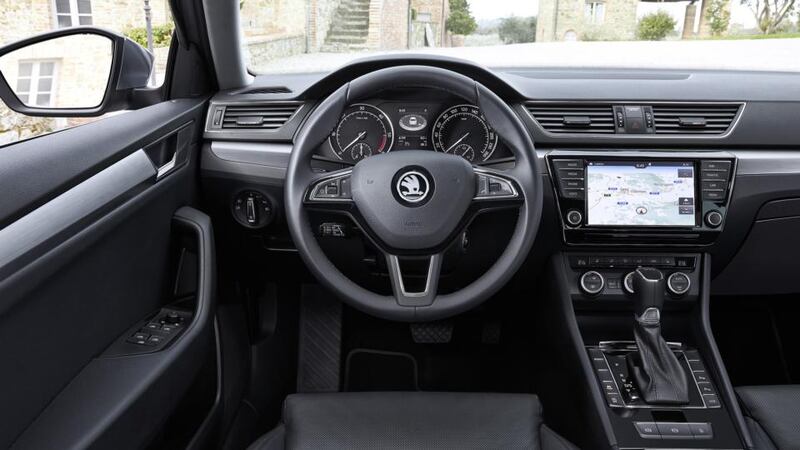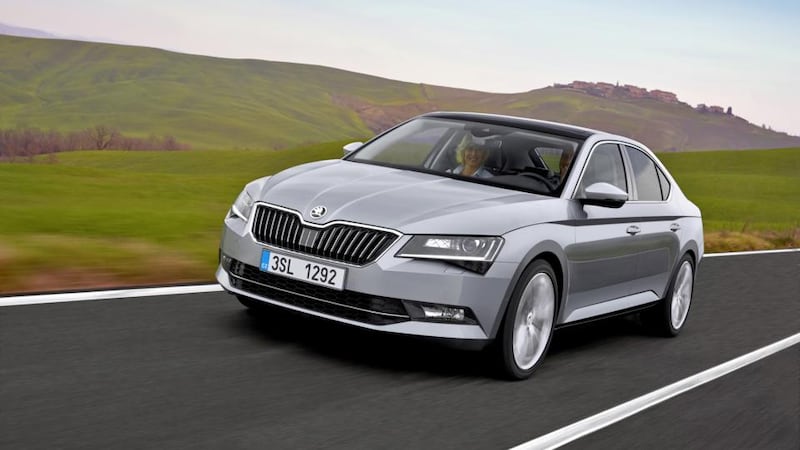Even allowing for the exaggerated nomenclature employed by car companies, calling a Skoda model a Superb did raise more than a few eyebrows when the car was originally launched.
Any scepticism was short lived, however, as cost-conscious buyers – both fleet and private – began to realise that what the Superb offered was very keen pricing, a great deal more standard equipment than competitors, acres of room, both inside the car and in the boot, and the new-found reassurance that Skoda was now a Volkswagen by another name.
There are now two very good indicators of the measure of the car's success: the first being that almost every single taxi driver now aspires to owning one, and the second that, as of last week, the Skoda Superb was trailing the Ford Mondeo by fewer than 20 cars in the sales figures for the year to date. And this at a time when the Mondeo was a relatively recent arrival on the market and most observers were aware the Superb was being replaced with a newer model.


The older Superb did not live up to its bloated name. Yes, it had all the qualities mentioned above but the styling effort was almost completely failed by the rear, which, being designed to facilitate a combined hatchback and standard boot opening mechanism, looked pretty awful. The new car is lower and sleeker in appearance.
The front lighting and grille arrangement are more a nod to BMW than VW and the combined hatch/boot concept has been dropped because of its styling drawbacks, the expense of producing it and, by Skoda's own admission, the fact that no one really used it anyway (BMW had toyed with the same idea and subsequently dropped it).
Interior
So this time, the Superb has a presence that is much more attractive and the styling front and rear has been sharpened considerably.
It's not up to a BMW or Audi standard but it is certainly of a higher standard than the outgoing model and makes the car a much more attractive option, despite some limitations. These include the fact that the team that built it was obviously constrained in what it could do – you can't be part of the VW Group and try to create a car that makes either the VW Passat or the Audi A4 look challenged.
You will notice that the interior of the new Superb does not match the aspiration suggested by the car’s name and the Passat’s interior is sharper, more engaging and, frankly, better quality. The A4’s is altogether different and more expensive. Even one of the car’s design team acknowledged there are limits when budgets are set and Skoda’s central mission is to produce the value-for-money brand within the group.
Yet, it is not a poor offering. The dashboard may be black plastic over black but the displays and instrumentation are crisp and functional and as user-friendly as those in the Passat. All of the attributes one appreciated in the older model are there again and mostly improved. Apart from a Mercedes S-Class, or even Rolls Royce, there are few cars that have the interior space and comfort of the Superb. The seats are extremely well made and supportive, and you could almost fit four adults in the rear instead of the normal three. Headroom and legroom are generous, with an extra 28mm in length and 30 litres of extra boot space. There are the clever things too such as the two umbrellas that slot into the driver and passenger seats and an ice scraper secreted in the fuel cap.
Clever
Standard equipment includes seven airbags, stop/start technology, electric handbrake, hill hold, touch screen, Bluetooth and multi-function steering wheel, front assist and dual zone air conditioning. You do pay extra for features such as bi-xenon headlights, cruise control, a colour touch screen, rain-sensing wipers and so on. But it is still a car that has been truly well thought out in terms of being clever and very good value for money.
There are four engines in the line-up, all with a reduced CO2 output yet with extra capacity. The entry-level unit is the 1.6 TDi with 120 bhp and this is followed by two 2.0 TDi engines with a choice of 150 and 190 bhp. There is also an option of a 2.0 litre petrol version producing a massive 280 bhp.
The 1.6 is the most attractive in terms of price but not when other factors are taken into account. It appears at first to offer excellent torque but a reasonable incline puts it under pressure. The 150 bhp 2.0 litre TDi is by far the better choice, offering excellent flexibility and economy, and it is a well proven unit across the VW Group. Fuel economy tends to be very good with this engine although the VW claim that a rather unrealistic 4 litres per 100km is possible is very doubtful. Even the 1.6 was returning 5.9 litres per 100km for our relatively short test drive.
Driving DNA
When you drive the car you realise straight away that the Volkswagen Group’s MQB platform and other shared elements of driving DNA have been well shared. The Superb has balance, very good grip and poise, and handles really well, despite its increased size.
Incidentally, an expensive option – dynamic chassis control – that allows you to choose a comfort, normal or sport setting is a waste of time. The comfort setting is way too soft, so the normal is the only realistic choice for most driving.
The entry-level pricing begins at €27,995 for the 1.6 TDi base model. Adding all the extras will take the price up to €33,995. Automatic DSG transmission adds another €2,000.
The more attractive 2.0 TDi starts at €32,195, so it probably makes more sense to consider this as the realistic entry price point if you want the performance it offers over the 120 bhp 1.6. You can then move up the range to a fully-specification four-wheel drive model at €43,495 or to the nonsensical petrol 280 bhp four-wheel- drive version at €42,295. An estate version will follow later this year.
Skoda cars are not as keenly priced as they used to be and the current Superb is about €1,200 more expensive than the previous one. The Mondeo went up by almost €2,000 when it was replaced and the Volkswagen Passat went up by €1,700. However, they are still very well equipped and represent good value for money. The pity is that, like most cars, you have to spend more on extras to get the best possible version.
Still, the Superb has now narrowed the gap and if you are buying a car in this segment you really cannot overlook it. It now has the looks, technology and fuel efficiency to justify very close comparison with some of the biggest names out there.
Its second-hand value has also increased recently and it is actually quite difficult to find a low-mileage one at a good price. That's where the taxi drivers come in. Lowdown: Skoda Superb
Engines: A choice of three diesel versions for the Irish market with range of outputs that includes 120 bhp; 150 bhp and 190 bhp. There is also a 280 bhp 2.0 litre TSI option
Fuel economy (for 1.6 version): 5.9 l/100 km (47mpg)
Emissions (motor tax): 100g/km (€ 180)
0-100 kph: 10 seconds.
Features: Seven airbags, stop-start technology, touch screen, electric handbrake, hill hold and front assist
Arriving: In showrooms from July 15th
Prices: Starting at €27,995 for the 1.6 TDi 120 bhp version














